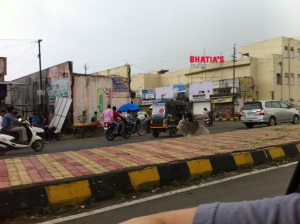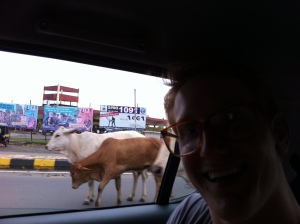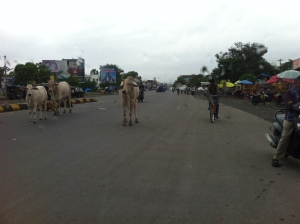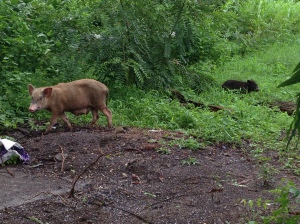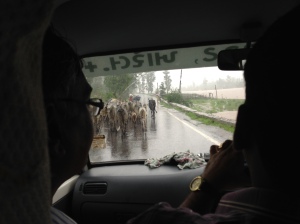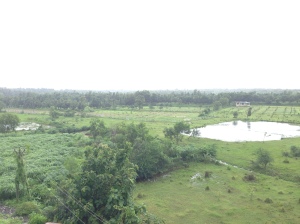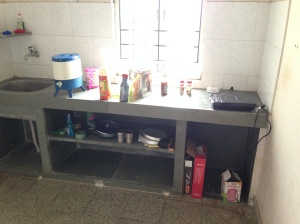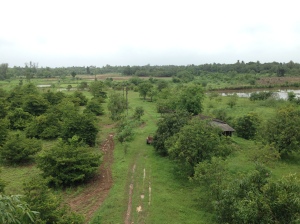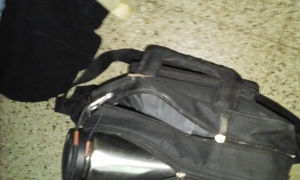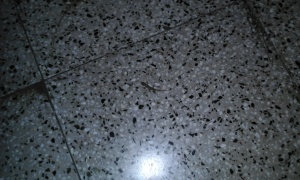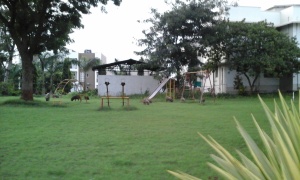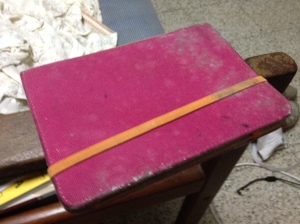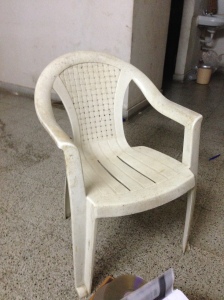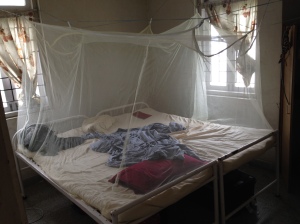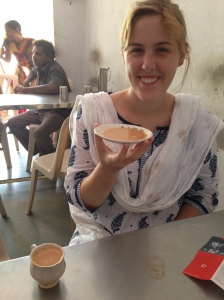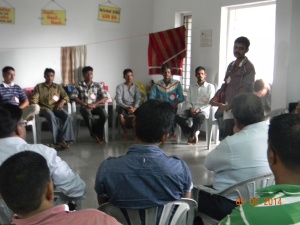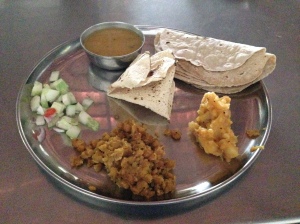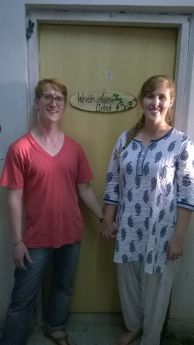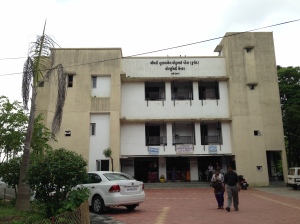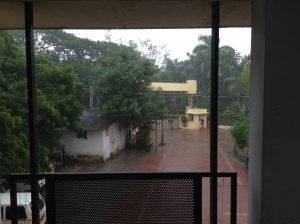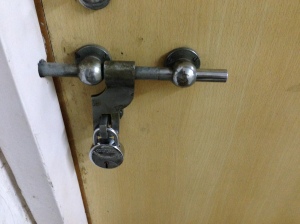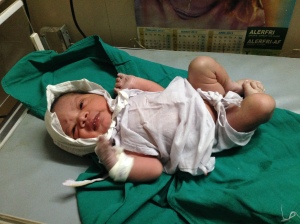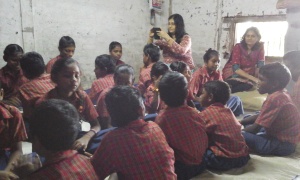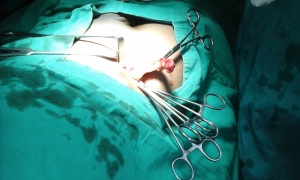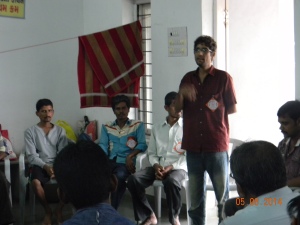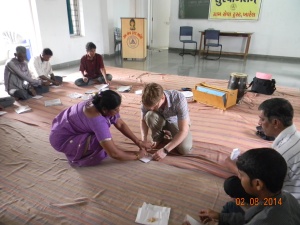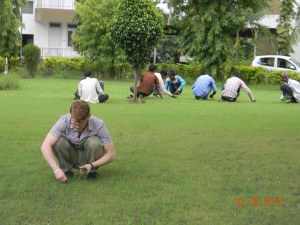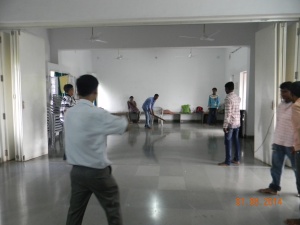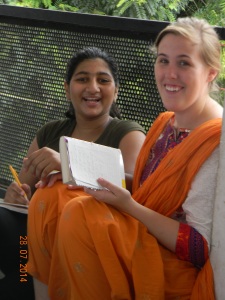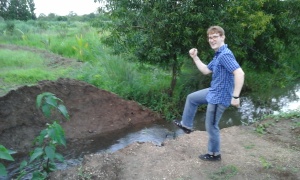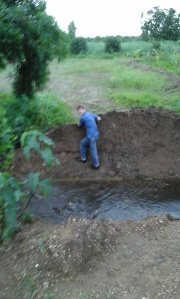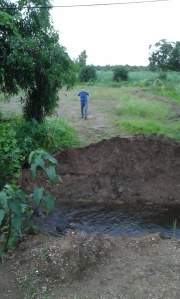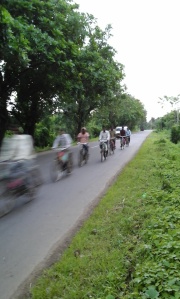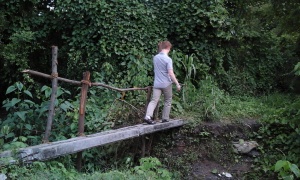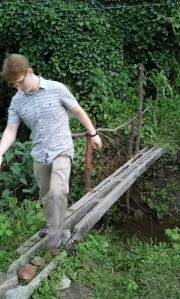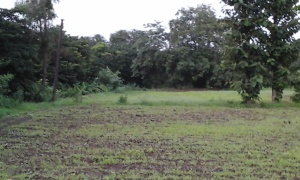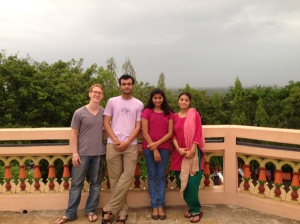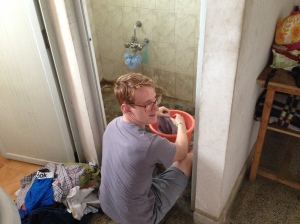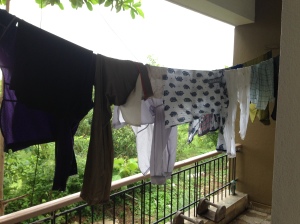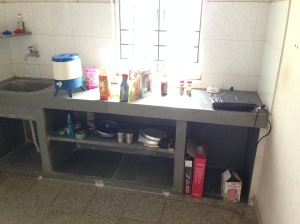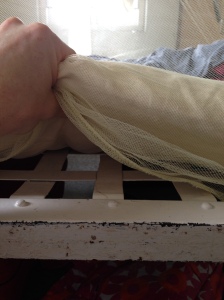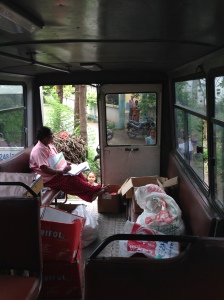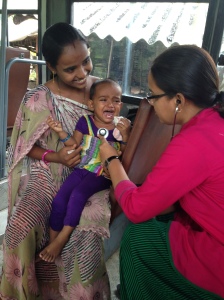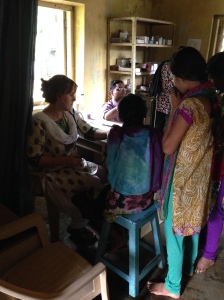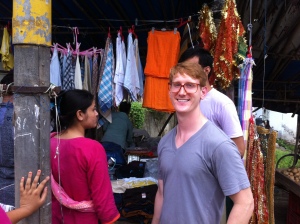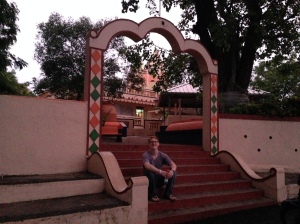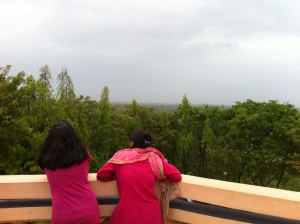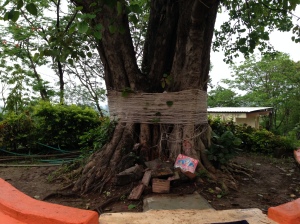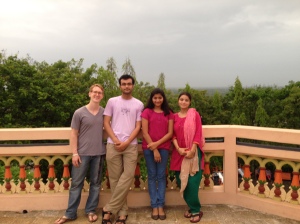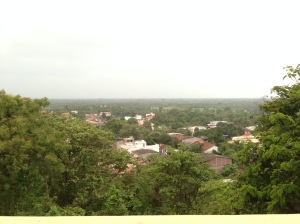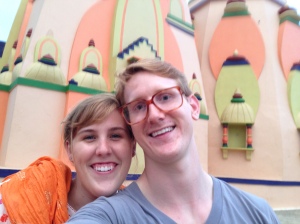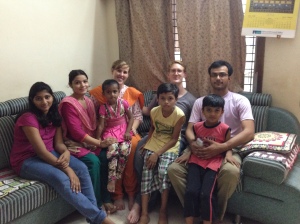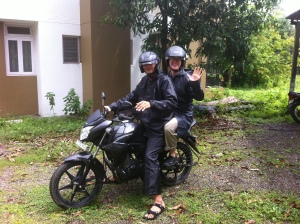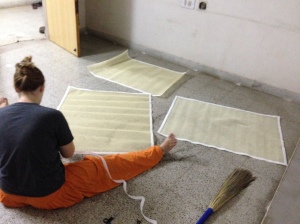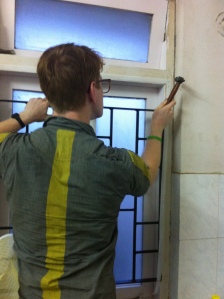What qualities do you think make a good international volunteer? Perhaps determination, openness to new experiences, fluency in another language, a positive disposition, or maybe just a genuine desire to serve? While all of those qualities are helpful (especially the fluency in another language… something I could definitely use about now), they do not touch on one of the common characteristics of international, rural volunteer work: living in the great outdoors.
Our trip so far has definitely been eye opening for Wende and I. It has helped us to see that people are all essentially the same no matter where you go – or as Paul Farmer would say, “The only real nation is humanity.” It has allowed us to accept that even though we criticize some things in America (habitual excess, dominant capitalism, overspending on healthcare etc.), in the end, America is the place that brings us comfort and in all likelihood will always be our home. More than anything, this trip has showed us that while this may be our first venture to volunteer overseas, it will definitely not be our last.
Since Wende and I are habitually enthusiastic over-planners, we have already started to think about what form our next trip overseas may take. There are countless organizations around the world that are in need of medical volunteers, but there is one organization that stands out to us: Partners in Health (PIH). PIH was founded by a physician named Paul Farmer, who has (almost singlehandedly) changed the way physicians think about international medical work. While he started his career at the age of 20 with the creation of a hospital in Haiti, his organization has expanded to fight infectious disease around the world.
Before coming to India, I knew of Paul Farmer and some of his accomplishments, but I didn’t know much about his life. On our first day at the Gram Seva medical campus, a physician handed us a book titled Mountains Beyond Mountains, and simply said it was an incredibly moving story. The book is written by a journalist named Tracy Kidder, who inadvertently follows Paul Farmer’s journey over a 15 year period.
Since I was still in the middle of some teen-fantasy book (something I’m only slightly embarrassed to admit), Wende read the book first. Now, Wende is usually the type of reader who sits down with a book and devours it, barely pausing to stop for food or others’ company. However, with Mountains Beyond Mountains, it seemed like she stopped every other page to talk with me about a thought provoking quote or some gut-wrenching story. I knew the book must be good.
Paul Farmer’s personal written works are known to be provocative, but dreadfully academic (he is a Harvard professor after all). So I was delighted to find that Mountains Beyond Mountains was the story behind the man, the story that Paul would never be able to tell himself through academic writing. The book is full of hilarious anecdotes with serious moral overtones, and you walk away from the book feeling like Paul may just be a normal person after all. An incredibly dedicated, but normal, person. I absolutely loved the book, and if you are looking for an easy read that will make you think a little differently about the world, go pick this up.
We had known about Partners in Health before reading Tracy Kidder’s book, but his writing had greatly enhanced our desire to be involved with the organization. We started looking around on the website for opportunities to get involved, and we came across a residency position in Mexico (only a few years in the future for us). Many of the requirements for applicants seemed pretty standard (fluency in spanish etc.), but one peculiar prerequisite stood out to us – it said, “You must have experience with camping.”
This line got us thinking, “Would camping have been a good prerequisite listed for our trip?” We started to look back at our experiences of GST through this new lens, and the answer quickly became, “YES.” Here are just a few ways our life in India reminds us of camping:
- Insects:
- Mosquitoes – I know that you have seen the photos of Wende being eaten alive by mosquitoes in a previous post, which has thankfully gotten better, but I can’t remember having to use DEET insect repellant often inside my house back in the US. It feels like we are in a constant battle between us and the mosquitoes… I think the mosquitoes are winning.
- Ants – I know I have heard statistics about the absurdly vast number of insects that exist on our world, but after living here for a few weeks, I think those numbers may be underestimates. We are constantly finding new infestations of ants across campus (and our apartment). We can’t leave any food out for more than 5 minutes, or we will return to find we have successfully created a new ant colony.
- The sounds of nature: One of my favorite parts of living in this housing complex is the sound of nature right outside our window. Apparently the sound is so ubiquitous, we were told by a friend that they can hear it in the background of all our WhatsApp voice messages. Why, just a few mornings ago we woke to the sound of 20 different bird calls just feet from our window, but when we went to inspect we found that all of those sounds had been made by a single tropical bird on a nearby branch. That beats my IPhone’s alarm any day!
- Lizards, lizards, everywhere: What are some of the creatures you expect to possibly find in your own house? Mice, spiders, maybe even a rat. Well, if you lived in this part of India, you would expect 6 inch long lizards.
Upon spotting our first lizard, we tried to chase it out of our room, only to accidentally chase it instead behind one of our light fixtures. We told our neighbor about it, hoping they would have some advice on how to get rid of it, but their only reply was “Oh yeah, that’s one of their favorite spots.” Very reassuring.
Since that first encounter, we have become pretty comfortable with the site of lizards in our room. How comfortable you ask? Well, yesterday I went to go use our bathroom, but when I opened the door I saw a lizard run down our wall and behind the toilet seat. I just sat down and did my business – my mentality: if you don’t bother me, I won’t bother you.
- Camp stove: When you go camping, you do your best to prepare the foods you enjoy at home, but you end up settling a little. Well, without a refrigerator, oven, or full set of utensils, the type of cooking we do here definitely aligns more with camping than with our kitchen back in America. In fact, all of the cooktops in our housing complex are fueled with propane tanks similar to those used for your grill (or Coleman camp stove).
- Standard of cleanliness: If you’re camping, and it’s been a couple days since you’ve taken a shower, or your clothes are starting to smell a little, so what? While other people here may feel differently, when I see lizards running around the apartment, my motivation to worry about something like dirt or dried leaves on the floor drops dramatically. What doesn’t kill you makes you stronger right? I think that phrase applies for your immune system as well 🙂
- Wild dogs, peacocks, and pigs (Oh my!): I never know what type of animals I may see during a typical day at the Gram Seva Trust. So far I have seen –
- Pigs roaming around campus – I’ve even seen them wallowing in a mud pit!
- Wild dogs everywhere – The mentality toward animals as pets is very different in an area where people are more worried about being able to feed themselves. Most of the dogs in the area are wild, and treating them with any kindness is unheard of by the locals.
- Cows… lots of cows – Cows are a sacred animal in Hinduism, so people tend to treat them with great kindness (similar to how we treat pets). Cows are always standing in the middle of the road here, but I have never seen a car touch one. I have even seen a man pull over and feed his leftovers to a cow.
- Peacocks – I did not have much experience with peacocks before this trip, but now I see one almost every day on our walks with Nikki (the dog) and Nandini.
- Snakes – Snake bites are quite common here, and if you are bitten they recommend you try to kill the snake and bring it in with you for identification. That sounds like a pretty intimidating task, but luckily I have only seen one 3 foot snake during my trip (slithering away from me).
These are just a few of the ways our life here resemble my previous experiences with the great outdoors. Now, I will have a better idea of what to expect in my international rural travels, and when filling out applications we can definitely check the box – “Have experience with camping.”
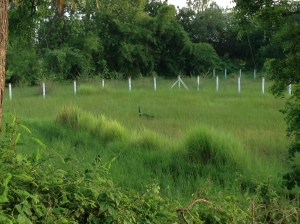
One of the male peacocks we have seen on our walks – We have not seen one with its tail raised yet though.

